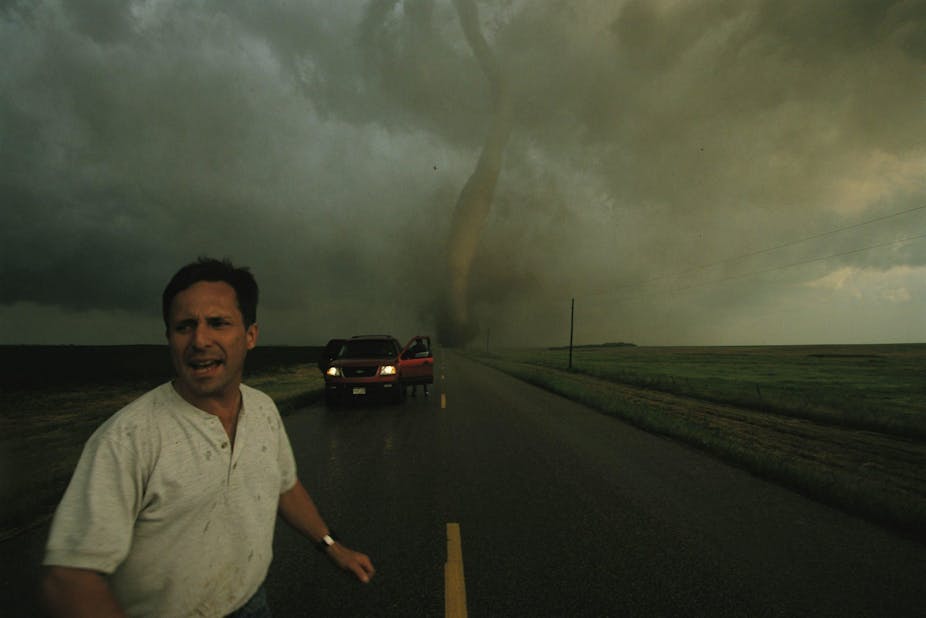Tornadoes are a part of life for people living in the Great Plains of the United States. In Oklahoma, a state that averages 62 tornadoes a year, people are prepared as best as they can be and are well warned.
It’s imperative that they are when a large population centre - the metro-area of Oklahoma City that contains over 1 million people - is in one of the most dangerous places on earth for significant and destructive tornadoes.
Monday May 20 starkly highlighted this vulnerability when a violent and deadly tornado bore down on the sprawling suburb of Moore, south of Oklahoma City. Warnings came thick and fast and survival plans were enacted. At 3:14pm on that day, the US National Weather Service warned on its Facebook page: “This is as bad it gets. Deadly dangerous tornado. Don’t know what else we can say. Take cover right now!” Nature is sometimes capable of laying waste to even the best-made plans.
Tornadoes are some of the most dangerous weather phenomena on earth. Their strength is measured by destructiveness using a system called the Fujita (F) Scale, or the Enhanced (EF) Fujita Scale, with numbers given from 0 to 5.
Weak tornadic winds (F0) will break branches and shift roof tiles. The strongest tornadoes have winds of up to 500km/h, dislodging asphalt from roads and uprooting concrete foundations (F5).
Wind speeds in an F5 tornado are much faster than their tropical cousins, hurricanes, although they affect a much smaller area. While hurricanes span hundreds of kilometres and last for days or weeks, tornadoes span only a few kilometres wide at most and usually last for less than an hour.
The mechanisms causing violent tornadoes are unique, making them relatively rare. However, on the Great Plains of the United States in the northern hemisphere spring, several factors come together to create the perfect conditions, giving the area the nickname “Tornado Alley”.
Fast-moving streams of air bring warm, moist air northward from the Gulf of Mexico. These provide the ingredients needed to generate tornadoes, which are usually spawned from a particular type of thunderstorm called a supercell. These thunderstorms have vigorous, rotating updrafts that are characterised by buoyant air rapidly moving upwards and spinning as it goes.
The winds rotate because the wind speed and direction changes with height, providing an abundance of something called vertical wind shear. It is this wind shear that causes supercells to rotate, and it is this strong rotating updraft, that spawns hail the size of cricket balls and devastating tornadoes.
Leaving a damage path more than 30km long, and lasting for more than 40 minutes, the tornado that hit Moore has been rated at least an F4, and may be upgraded to F5.
The tornado was a monster, but it was not unprecedented. The vulnerability to destructive tornadoes in this area of the world is high, and Monday’s tornado took a similar track to a similarly devastating tornado on May 3, 1999, which, at the time was described as the most destructive in history.
But no matter where in the world such a violent tornado hits such a highly populated area the consequences are devastating.

